Clifford Garstang's Blog, page 5
September 16, 2024
I’ve Got Questions for Carolyn Jack
Editor’s Note: This exchange is part of a series of brief interviews with emerging writers of recent or forthcoming books. If you enjoyed it, please visit other interviews in the I’ve Got Questions feature.
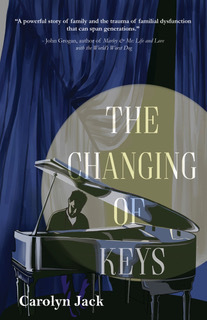 The Changing of Keys by Carolyn JackWhat’s the title of your book? Fiction? Nonfiction? Poetry? Who is the publisher and what’s the publication date?
The Changing of Keys by Carolyn JackWhat’s the title of your book? Fiction? Nonfiction? Poetry? Who is the publisher and what’s the publication date?The Changing of Keys (literary fiction, Sept. 17, 2024, Regal House Publishing)
In a couple of sentences, what’s the book about?With his father dead, a young pianist is sent by his controlling mother to study music in the U.S. Away from her and his Caribbean home, he defies her plan, leaping into the world of opera, where his ambition fires both his brilliance and his dark distrust of women, threatening his career, marriage and the daughter he never wanted.
What’s the book’s genre (for fiction and nonfiction) or primary style (for poetry)?Literary fiction
What’s the nicest thing anyone has said about the book so far?“Carolyn Jack delivers a powerful story of family and the trauma of familial dysfunction that can span generations. In beautifully rendered prose, she reminds us of the essential role of the arts and creative expression in making us fully human. This tale of love, loss and human frailty will stay with you long after the last page.” – John Grogan, international bestselling author of Marley & Me: Life and Love with the World’s Worst Dog and the memoir, The Longest Trip Home.
What book or books is yours comparable to or a cross between? [Is your book like Moby Dick or maybe it’s more like Frankenstein meets Peter Pan?]Like Ann Padgett’s Bel Canto, my novel is about music as a force that can create and affect human relationships; like Andrea Buchanan’s Five-Part Invention: A Novel, my story involves an emotionally troubled pianist whose situation is unintentionally made worse by a wrongheaded family member.
Why this book? Why now?The Changing of Keys, which took me 15 years to write (in my off-moments, while being a full-time journalist and co-raising two children), started with my lifelong questions about why my father couldn’t seem to get over his childhood trauma and stop being his own worst enemy when it came to dealing with other people. Though the story I wrote is completely fictional, it is my attempt to find answers to those questions.
Other than writing this book, what’s the best job you’ve ever had?I’ve had a couple: theater critic for The Palm Beach Post, which brought me into contact with some of the most amazing theater artists on the planet; arts reporter for The Plain Dealer in Cleveland, Ohio, which allowed me to help inform a large community about the value of arts and culture and the societal, political and educational issues they generate. But maybe the very best was, oddly, an unpaid one: singing for 10 years with the Cleveland Orchestra Chorus. That was magic. Sometimes dark magic, but magic, nonetheless.
What do you want readers to take away from the book?An understanding ofhow important it is to show kindness and unconditional love to children and help them learn how to give it in return. For a child to be raised withoutthat love and emotional security is a disaster, not only for the child, but for the people and nations who will be affected by them over time.
What food and/or music do you associate with the book?My book is full of music. It’s mostly classical, ranging from Beethoven to Bizet and Duruflé, but some rock music sneaks in with mentions of Jimmy Page and Hendrix and others. Food? A wild array, from tropical seafood to Southern fried chicken to Welsh rarebit, depending on where my widely traveled character is at any moment.
What book(s) are you reading currently?I’ve been working on a history book I’ve long wanted to read: John Julius Norwich’s The Normans in Sicily. But I’m also simultaneously dipping into Thomas McGuane’s collection, Gallatin Canyon, and starting Paul Lynch’s Prophet Song. I kind of like to read several things at once.
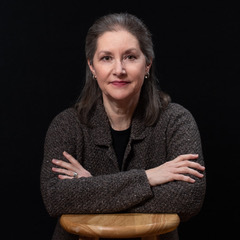 Carolyn Jack
Carolyn JackLearn more about Carolyn on her website.
Follow her on Facebook and Instagram.
Buy the book from the publisher (Regal House Publishing), Amazon.com, or Bookshop.org
August 26, 2024
I’ve Got (More) Questions for David Ebenbach
Editor’s Note: This exchange is part of a series of brief interviews with emerging writers of recent or forthcoming books. If you enjoyed it, please visit other interviews in the I’ve Got Questions feature.
 Possible Happiness by David EbenbachWhat’s the title of your book? Fiction? Nonfiction? Poetry? Who is the publisher and what’s the publication date?
Possible Happiness by David EbenbachWhat’s the title of your book? Fiction? Nonfiction? Poetry? Who is the publisher and what’s the publication date?The book is called Possible Happiness, and it’s a coming-of-age novel being published by Regal House Publishing on September 10, 2024. It’s available for pre-order now!
In a couple of sentences, what’s the book about?Here it is in one sentence: A loner teen accidentally unlocks a social life with his sense of humor—but can he unlock meaningful happiness that way, too, or will he first have to face and understand himself?
What’s the book’s genre (for fiction and nonfiction) or primary style (for poetry)?My publisher tells me that the book is Young Adult (YA) fiction, but I originally wrote it with a grownup audience in mind—so anyone in high school or beyond could handle (and hopefully enjoy) it.
What’s the nicest thing anyone has said about the book so far?Maybe I’ll nominate a comment from a reviewer on LitPick, who wrote: “I love everything about this book.” I mean, that’s pretty good, right? Although I also loved the starred Booklist review that called Possible Happiness “a beautiful coming-of-age novel with a highly empathic, multidimensional character who comes alive on the page. The mood and tone are spot on, contributing to a memorable reading experience.”
What book or books is yours comparable to or a cross between? [Is your book like Moby Dick or maybe it’s more like Frankenstein meets Peter Pan?]The emotional landscape is kind of like the one in Stephen Chbosky’s The Perks of Being a Wallflower, but with more humor—like adding several dollops of J.D. Salinger’s Catcher in the Rye?
Why this book? Why now?That’s a great question. After all, the book is set in 1989, so it’s not exactly timely, right? Unless it is. I mean, I wrote this book now because now was when I was able to tell the story—sometimes you have to have some distance to be able to tell a story. But along the way I found myself exploring things that remain important today, the only difference being that we have more language to talk about those things today. Specifically: mental health, race, and class, all of which infuse Jacob’s story even if he can’t find words for what he’s seeing.
Other than writing this book, what’s the best job you’ve ever had?In my first I’ve Got Questions interview I talked about the pleasures of my very first job, which involved wrestling opossums out of cages, and in my second interview I talked about the joy of teaching and helping others with their teaching. Those are probably my best answers, but, to keep things interesting, this time I’ll mention the string of temp jobs I did in my early 30s. The work was not exciting or even particularly interesting, but usually I was able to do my tasks quickly and then have time left over, sitting in front of a computer. And so those jobs actually left room for a fair amount of writing—much more than meaningful work does.
What do you want readers to take away from the book?I guess I’m hoping for a couple of things. First of all, I want people to come away feeling like they’ve been spending time with real people, and moved by them, perhaps carrying away a deeper gut-level understanding of the experience of depression. I also hope they’ve laughed a fair amount. It’s those kind of emotional reactions that are my main priority. Secondarily, if people leave with good questions about friendship, of the complexity of race and class dynamics, and about the importance of giving language to mental illness so that people can articulate their lives, that would be great, too.
What food and/or music do you associate with the book?I don’t associate much food with this book, which is weird, because I’m a big food guy. But the novel is saturated in the music of the late 80s, and the song “Head Like a Hole” by Nine Inch Nails is a recurring force in the book.
What book(s) are you reading currently?I’m rereading Salman Rushdie’s The Satanic Verses, which is still great and so different from the way I write—so frenetic and loud and maximalist. I’m also reading Les Fourmis by Bernard Werber, which is partly from the point of view of some ants. Next up, I’m very excited to get started with Asha Thanki’s A Thousand Times Before.
 David Ebenbach
David EbenbachLearn more about David on his website.
Follow him at Facebook and Instagram.
Buy the book from the publisher (Regal House Publishing), Bookshop.org, or Amazon.
August 25, 2024
Flash Sale on THE LAST BIRD OF PARADISE!
The publisher of my latest novel, The Last Bird of Paradise, has just announced a ridiculous sale on the Amazon Kindle price of the book. Today and tomorrow (August 25 and 26, 2024), the price is just 99 cents. What a great deal! Click HERE to buy.
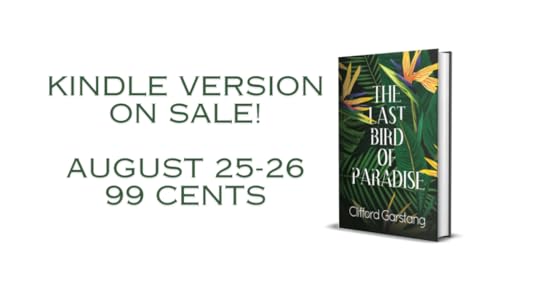
August 1, 2024
2024 Reading — July
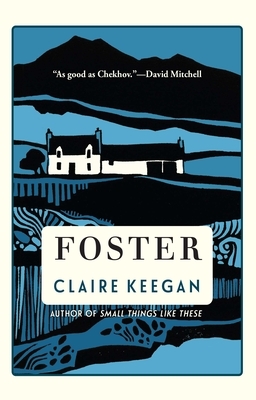 Foster by Claire Keegan
Foster by Claire KeeganFoster by Claire Keegan is a very short novel that was first published in an abridged form as a short story in the New Yorker in February 2010 (or, possibly, the novel is an expansion of that story). In fact, back then I was commenting on my blog about every piece of fiction in the magazine and I liked it very much, although I wasn’t sold on the ending. When I polled my readers to choose the best story of the year, “Foster” won, as I announced here. I still find the ending difficult, but I won’t discuss that here because you should read it for yourself. The story begins with a girl’s father dropping her off to stay with a childless couple. We learn that the girl’s family is poor, and she’s the oldest of several children, with another on the way. Living with the Kinsella family is a huge change for her—there’s money to buy clothes, there’s food to eat—and she settles into a comfortable life without seeming to miss her family much. The more she realizes what she’s been deprived of, the sadder the story gets.
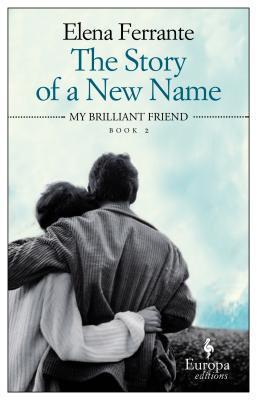 The Story of a New Name by Elena Ferrante
The Story of a New Name by Elena FerranteThe Story of a New Name by Elena Ferrante is the second in the Neapolitan novels by Ferrante. I didn’t love the first one, but I thought I’d take a stab at this one, since the books remain popular. In this volume, set in the 1960s, the girls are a little older and, in fact, one of them marries at age 16. The narrator is telling that girl’s story, while also telling her own. They come from a very poor neighborhood, where men treat women badly, and there isn’t much anyone can do about it. The book can be a bit tedious, at times, because Elena, the narrator, second guesses everything. She’s smart, no she’s ignorant, she’s pretty, no she’s ugly. And her friend, who is brilliant and beautiful, can’t seem to do anything right, so remains mired in Naples, while the narrator, to her surprise, manages to escape.
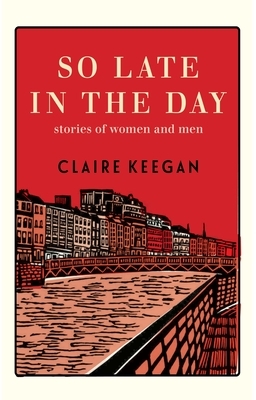 So Late in the Day by Claire Keegan
So Late in the Day by Claire KeeganSo Late in the Day by Claire Keegan is a collection of three haunting stories. The title story is about a couple whose relationship founders from the beginning, with neither of them particularly keen about getting married. The second story is about a writer who goes on a writing retreat and encounters an unsettling man. I enjoyed the story because of the way the writer manages to avoid writing—there are walks to be taken, meals to cook, etc. The final story is about a woman who embarks on a fling, for reasons that aren’t made clear, and has to deal with the consequences.
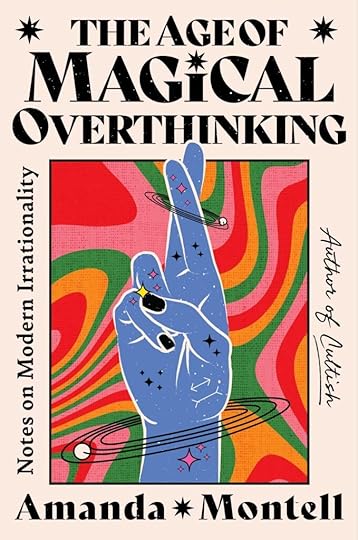 The Age of Magical Overthinking by Amanda Montell
The Age of Magical Overthinking by Amanda MontellThe Age of Magical Overthinking by Amanda Montell was my book club’s selection for this month, and I don’t think any of us really liked it much. It felt disjointed while occasionally making good—if obvious—points. The writer has written about cults, and here she’s writing about a related phenomenon: how we are inclined to believe what we hear/read because of various biases we harbor. It all boils down to the fact that you shouldn’t believe everything to see on the internet. It drives me a little batty that people will repost memes, for example, without checking to see if the underlying information is accurate. Often it isn’t.
 Small Things Like These by Claire Keegan
Small Things Like These by Claire KeeganSmall Things Like These by Claire Keegan was shortlisted for the 2022 Booker Prize. I found a lot to like about this short novel that paints a portrait of a good man. He’s a good father and husband, although he didn’t have a father involved in his own upbringing, and he attempts to do the right thing. It’s a moving book, as I’ve found Keegan’s other books to be.
July 30, 2024
Workshops, Conferences, and Residencies
When I graduated from my Creative Writing MFA program (Queens University of Charlotte) in 2003, I guess I was aware of writing conferences and residencies, but I’d never attended one. After all, I had just spent two years in writing workshops and craft lectures, so, surely, I had done all I needed to do to become a successful writer. The very next year, though, I found myself at two conferences that were really workshops with the addition of craft talks and readings.
WorkshopsWhile busily writing short stories and sending them out to magazines after receiving my MFA, I saw an advertisement in Poets & Writers magazine for a writing workshop in Mexico with Russell Banks. I had worked with some prominent writers in my MFA program, one of whom, Elizabeth Strout, would soon publish a breakout novel, but Banks, it seemed to me, was already on another level. Plus, I had never been to Mexico, so it seemed like a great opportunity.
In January 2004, I flew to Mexico City and spent a few days as a tourist there—it’s a fascinating city—and then made my way to the village of Tepoztlán, about one hour from the city, for the workshop. Under the Volcano was in only its second year but seemed well organized. It now calls itself a residency with workshops, but at the time, I thought of it as a conference because it was focused on classes and workshops rather than time to write.
In any event, my experience there was great. Banks was wonderful. My workshop-mates were wonderful (and I’m still in touch with some of them). I got great feedback on the stories I’d been working on. I learned some Spanish. (The experience was so good that I returned a couple of years later in order to study with the incomparable Grace Paley and then a third time, in part because Paley was ailing and would be there as an honored guest.)
Also in 2004 I attended the Sewanee Writers’ Conference. (This newsletter was actually prompted because I’d been seeing social media posts about Sewanee 2024, which was held recently, and I can’t believe it’s been 20 years since I first attended.) Sewanee takes place at the University of the South in Sewanee, Tennessee. Having come to writing after my legal career, I was older than most of the participants, but there were quite a few people my age or older too. My workshop was led by Richard Bausch and Jill McCorkle, both of whom were brilliant. Sewanee is a bit like an extension of an MFA program in that there are workshops in which creative writing is critiqued but also craft lectures and readings. Lots of readings. I loved it.
I’ve been back to Sewanee several times, including earning a fellowship after the publication of my first book. (My workshop leaders there have included Tim O’Brien and John Casey, two writers and teachers I greatly admire.) I’ve also been twice to the Bread Loaf Writers’ Conference, which is very similar to Sewanee except that it’s in Vermont and is associated with Middlebury College. Both of these conferences have very competitive admissions, so they aren’t easy to get into. There are lots of other workshop/conferences around (I’ve attended the Tinker Mountain Writers Workshop, for example), so there many options for writers who want a workshop experience but may not be able attend Sewanee or Bread Loaf.
ConferencesThe AWP Conference is another animal altogether. (AWP stands for the Association of Writers and Writing Programs.) Instead of a couple of hundred writers that you might find at Sewanee or Bread Loaf, AWP attracts upwards of 10,000 writers. The conference moves to a new city each year and is geared primarily toward people connected to college or graduate-level creative writing programs. My first AWP Conference was held in Atlanta in 2007. I’ve been to several of them since—New York, Chicago, Washington, Philadelphia, Seattle, Denver, Tampa—and find them fun but exhausting. They include countless panel discussions and parties, but the big attraction for a lot of people is the “book fair” where hundreds of exhibitors display the offerings of their small press, magazine, writing program, editing service, etc. The last couple of AWP Conferences I attended found me—apart from parties—exclusively in the book fair, where I either browsed endlessly or staffed the booths of one of the presses or organizations I’m connected to. The older I get, the less interested I am in AWP, which seems increasingly aimed at much younger writers and identity-focused discussions. Nothing wrong with that, but I do feel I’ve aged out of the target demographic.
ResidenciesAnd then there are writing retreats and artists’ residencies, formerly called colonies, where creative folks come together to spend time away from their regular lives in order to practice their craft.
For me, the first of these was my stay at the Virginia Center for the Creative Arts in the fall of 2005. The VCCA hosts more than 20 artists at a time, year-round—writers, visual artists, and composers—on a beautiful campus near Sweet Briar College, just south of the town of Amherst, Virginia. One thing I love about being there is that the residence building (where the bedrooms and dining room are) is separate from the studio building, so living is distinct from working. Also, because of the diversity of the artists there, I am always inspired by the work other people are doing.
Since that first visit, I’ve been back many times and have also been to several other residencies, including VCCA-France (a property VCCA owns in Southwest France), Ragdale (Lake Forest, Illinois), Kimmel Harding Nelson Center for the Arts (Nebraska City, Nebraska), and Hambidge Center for the Arts (Rabun Gap, Georgia). Each of these operates a little differently, but the basic idea is the same: they provide time and space in which to create. I have not been to the two oldest and most famous residencies, Yaddo and MacDowell.
Some Residencies, like Workshops, can be very competitive, but there are others that may only require finding an available time to attend. Of course, you can always just book a room somewhere and make your own residency in a place that is conducive to your creative practice. I’ve also done that countless times.
In other news . . .
I continue to schedule readings, talks, and interviews. Please check the Events page on my website for the latest additions to my calendar. And I’m also going to begin making better use of the Press page on my website to archive reviews and interviews, including videos and podcasts.
On August 9, I’ll be at Scuppernong Books in Greensboro, North Carolina for a reading and conversation with novelist and poet Valerie Nieman. If you’re in the area, I’d love to see you.

July 10, 2024
I’ve Got Questions for Dan Kopcow
Editor’s Note: This exchange is part of a series of brief interviews with emerging writers of recent or forthcoming books. If you enjoyed it, please visit other interviews in the I’ve Got Questions feature.
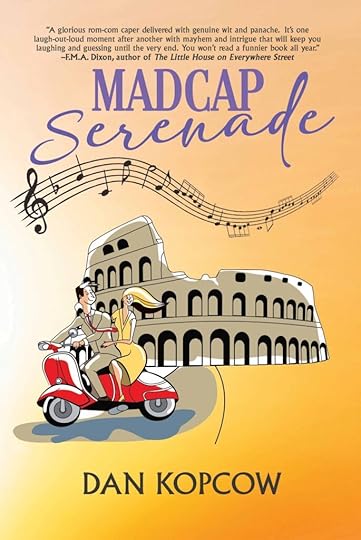 Madcap Serenade by Dan KopcowWhat’s the title of your book? Fiction? Nonfiction? Poetry? Who is the publisher and what’s the publication date?
Madcap Serenade by Dan KopcowWhat’s the title of your book? Fiction? Nonfiction? Poetry? Who is the publisher and what’s the publication date?Madcap Serenade. It’s a fiction rom-com published by Black Rose Writing. It comes out in paperback and ebook on July 11, 2024.
In a couple of sentences, what’s the book about?Eli, a precocious 16-year-old social misfit living on Long Island in August 1979, cons his way into a professional boys’ choir’s Italian and Vatican tour so he can discover his missing father’s legacy. But when he meets his dream girl, Jane, and finds himself connected to an intricate murder plot involving a legendary drug, he must decide if singing for the Pope is worth losing his family and first love.
Jane, a rebellious 16-year-old American girl, is desperate to get back in favor with her school friends after accidentally calling a narc on them. When she is sent to a Roman convent for smuggling erotic novels, she realizes she must grow up fast if she’s going to escape the nuns, solve her family’s mystery involving a mythical drug, keep clear of the authorities, and declare her love for Eli.
What’s the book’s genre (for fiction and nonfiction) or primary style (for poetry)?It’s a rom-com with a murder mystery thrown in for fun.
What’s the nicest thing anyone has said about the book so far?I’ve been fortunate enough to have some lovely things said about Madcap Serenade. One of my favorites is by fellow author F.M.A. Dixon (author of The Little House on Everywhere Street): “A glorious rom-com caper delivered with genuine wit and panache. It’s one laugh-out-loud moment after another with mayhem and intrigue that will keep you laughing and guessing until the very end. With two mysteries, two murders, and one romance set against a backdrop of a seemingly innocent choral tour of Italy, this madcap musical adventure is a Roman Holiday for our times. You won’t read a funnier book all year.”
What book or books is yours comparable to or a cross between? [Is your book like Moby Dick or maybe it’s more like Frankenstein meets Peter Pan?]I can speak more in terms of movies. Its structure is a bit like “Sleepless in Seattle” by way of John Hughes. It also has elements of P. G. Wodehouse’s novels. And a bit of murder mystery but in the gentlest and funniest way possible.
Why this book? Why now?I set the book in 1979 when kids were much more free to explore their world without adults swooping in. It was also a great reminder of the critical thinking and problem-solving skills that you developed in 1979 without the assistance of any technology. Lastly, Madcap Serenade is light and fun, which I think we all need now in today’s world.
Other than writing this book, what’s the best job you’ve ever had?As a teenager on Long Island, I sang in a professional boys’ choir and participated in their Italian singing tour, which included a gig at the Vatican and singing for the Pope. This fact remains completely coincidental with the plot of Madcap Serenade.
What do you want readers to take away from the book?I hope they get swept up in the wild musical coming-of-age journey about plunging into a romantic Italian adventure with no adult supervision nor technology to get you out of a jam. My goal is to make you laugh out loud and keep turning the pages to see how this intricately plotted story ends.
What food and/or music do you associate with the book?I listened to a lot of 1979 music. In fact, I’d be content never to listen to “My Sharona” ever again.
What book(s) are you reading currently?I’m currently reading a fascinating non-fiction book: Driving the Green Book: A Road Trip Through the Living History of Black Resistance by Alvin Hall.
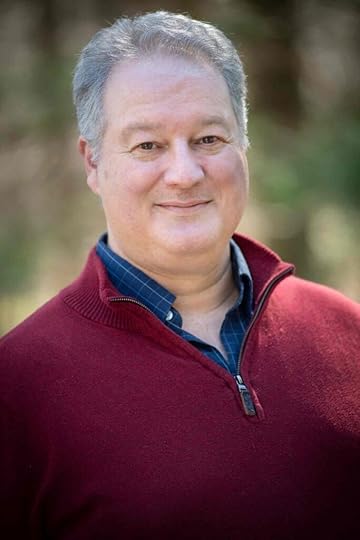 Dan Kopcow
Dan KopcowLearn more about Dan on this website.
Follow him on Facebook.
Buy the book from the publisher (Black Rose Writing), Amazon.com, or Bookshop.org.
July 2, 2024
The Art of the Book Review

Remember in school when you were occasionally tasked with writing a book report? The main objective of a book report was, it seemed to me at the time, to prove to the teacher that you read the book. It was typically more summary than analysis, although identifying themes might make the report stronger. My mother used to tell us a story—possibly apocryphal—about a book report she once wrote in school on a book that didn’t exist because she had failed to read the assigned book. Summarizing a non-existent plot strikes me as being far more inventive than an actual book report, so good for her. In any case, a book report is not a book review.
A blurb is also not a review. You know those quotes on the book jacket where someone says how wonderful the book is? These endorsements, or “blurbs,” have become a necessity for traditionally published writers, but it’s not clear that they really accomplish anything. They follow a formula, are usually exaggerated, and rarely tell readers anything meaningful about the book. (For my own books, I have expended too much energy and anxiety obtaining blurbs from writers I admire and also have been enormously grateful to them for their kind words.) On the covers of books I read, I sometimes look to see who has written the blurbs, but I don’t rely on them. Do you?
A reader review (on websites like Goodreads or Amazon) is also not a book review. These reader reviews take many forms. Most are just a sentence or two, although some readers write much longer comments. In a reader review, it’s completely appropriate to talk about likes and dislikes, because that may help other readers understand where the reviewer is coming from when they assign a rating (typically one to five stars). A star rating with no comment isn’t of much use to anyone.
And then, finally, there are book reviews for newspapers or magazines. While a certain amount of summary is expected in these professional book reviews, it shouldn’t be overdone (although it often is). In one publication for which I write book reviews, the guidelines specify that a review should be a mix of exposition, analysis, and evaluation, but leaves the proportions to the reviewer depending on the book under review. The balance among the three is where the art comes in.
I enjoy writing book reviews, although they often take a lot of time, especially if the book is at all challenging. In the last few years, I’ve written reviews for a few publications, including the Washington Independent Review of Books, the New York Journal of Books, and the Southern Review of Books. I was previously a member of the National Book Critics Circle, an organization of professional reviewers, but because reviewing is such a small part of my work, I discontinued my membership. Although I am paid for some reviews, it’s never very much. I consider it part of being a good literary citizen.
Three recent reviews I was asked to write posed particular challenges. The Washington Independent Review of Books invited me to review Parade: A Novel by Rachel Cusk. Although I had heard of the English novelist and memoirist, I wasn’t familiar with her work and had no sense of her style. I was intrigued when I learned that the book was about art and artists, because, as I mentioned in my last newsletter, I often find inspiration in paintings and the intersection of fiction and the visual arts. The book could be described as experimental, in that it essentially is plotless and includes explorations of art theory and gender. My review appeared here, a few days after the book was also reviewed in the New York Times, Washington Post, and the Atlantic.
In another case, a publisher,Northwestern University Press, asked if I would be interested in reviewing The Curators by Maggie Nye. Once I learned that the subject matter involved an incident in Atlanta in the early part of the 20th Century, I thought the Southern Review of Books would be a good place for it. It was challenging because the book, which begins with an unusual third person plural point of view, devolves into magical realism—more supernatural than real—that is challenging to follow. My review appeared here.
My most recent review in the New York Journal of Books presented a different sort of challenge. Narrated by a ghost, Briefly, A Delicious Life, by Nell Stevens, also has a supernatural element, but the trick here was discerning fact from fiction. While the ghost is, presumably, fiction, she is observing the brief stay in Mallorca of two real people, Frederic Chopin and George Sand, who really did visit that island in 1838. My review appeared here.
I will continue to review books—I have at least one review lined up for later this year—while plugging away on my own work in progress.
Speaking of my own work, I was delighted to learn last week that my novel, The Last Bird of Paradise, has won an International Impact Award in addition to the Maxy Award it won earlier.
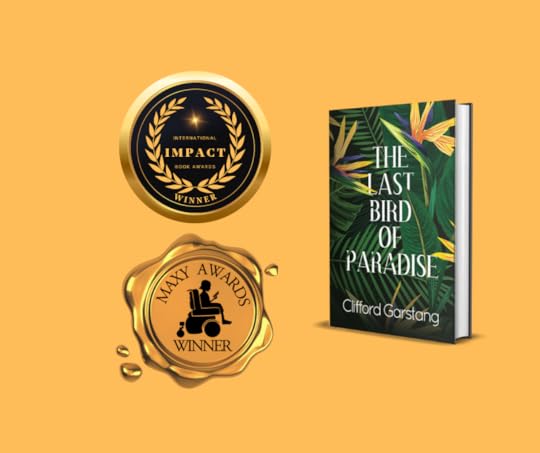
July 1, 2024
2024 Reading–June
 The River by Peter Heller
The River by Peter HellerThe River by Peter Heller is a novel set in the wilds of Canada. I’m not sure why I read this, because I did not like another book I read by this author and should have learned my lesson. I believe I have now. Two college students—one who grew up on a ranch in the West and one from a small town in Vermont—are on a long canoe trip northward to Hudson Bay before returning to college for the fall term. They are both skilled outdoorsmen, but otherwise have very different personalities. The writing is florid, to the point of being distracting, and the plot, once things start happening (like the massive forest fire that is looming), is extreme melodrama. This will appeal to some people, but that sort of adventure story isn’t for me.
 Beware the Tall Grass by Ellen Birkett Morris
Beware the Tall Grass by Ellen Birkett MorrisBeware the Tall Grass by Ellen Birkett Morris is a touching if somewhat familiar story told in two timelines. We first meet the parents of a newborn. The mother, Eve, is extremely protective of the baby, Charlie, who grows up under her watchful eye. Meanwhile, young Thomas, in an earlier time, grows up on a ranch and ultimately joins the army and leaves for Vietnam. In the present, Charlie exhibits odd behaviors and uses words he can’t possibly know, words a GI might speak. Eve’s worries about Charlie cause stress in the marriage. Although the reader guesses what’s going on, it isn’t until late in the novel that the text fully reveals itself.
 Crying in H Mart by Michelle Zauner
Crying in H Mart by Michelle ZaunerCrying in H Mart by Michelle Zauner is a grief memoir about the death of the author’s mother. Zauner is a Korean American musician whose Korean mother died of cancer. While the book begins with her death, it then retraces the path from diagnosis, to treatment, and back to death. What makes the book a little different from other grief memoirs is the element of Korean culture, especially food (which is why H Mart, a Korean grocery chain, figures prominently). Because of my own connections to Korea, that was enough to keep me interested in the book.
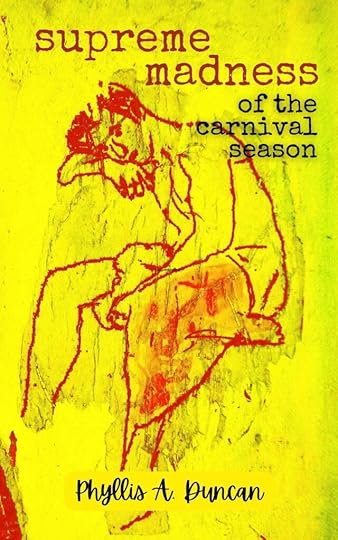 Supreme Madness of the Carnival Season by Phyllis A. Duncan
Supreme Madness of the Carnival Season by Phyllis A. DuncanSupreme Madness of the Carnival Season by Phyllis A. Duncan is a novel inspired by Poe’s story “The Cask of Amontillado.” A romance novelist and her husband have recently moved to a small town in Virginia. While renovating one of the rooms, they discover the bones of an infant that, apparently, had been entombed in the wall at the time the house was being built. The police aren’t so sure, and a nosy neighbor is keeping a close watch on what’s going on. In a separate timeline from World War II, we get clues as to who the baby might be and why it was in the wall. (The author is a member of my book club and we chose it for our selection this month.)
June 20, 2024
Inspiration: Where do story ideas come from?
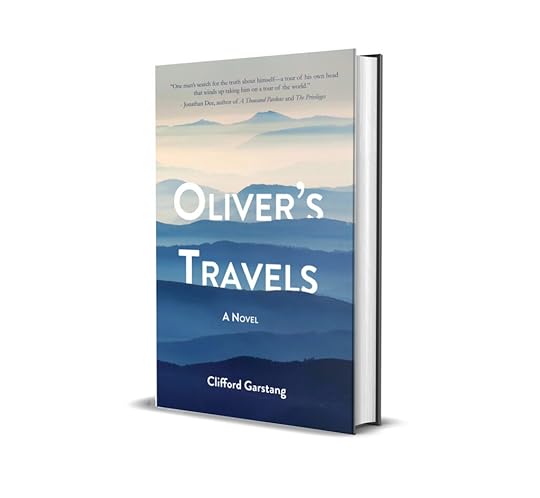 Oliver’s Travels
Oliver’s TravelsIn my 2021 novel Oliver’s Travels, the protagonist, Ollie, listens to the advice of his mentor, Professor Russell: “Travel is the key to unlocking the door of consciousness.” Because Ollie is troubled by a muddled memory, he embarks on a trip around the world that he hopes will help him discover what happened to him as a child. Along the way, his eyes are open to the possibilities that appear and the truths they reveal.
Travel has always been my muse, and I was fortunate to have a legal career that required so much international travel. When I began writing fiction, I experimented with a novel set in Southeast Asia, where I had lived for many years, because it made sense to write about a place I knew so well. That novel was never published, but I learned a lot from writing it.
As I was getting more serious about my writing, I relocated from Washington DC to rural Virginia, near a small community in the Shenandoah Valley. It was the first time I had ever lived outside of a city (even my assignment in South Korea during my time in the Peace Corps was in a provincial capital), and so everything was new to me.
Like the character Ollie, my eyes were open to the possibilities. Everything I saw in my community was a learning experience for me and, more to the point, fodder for fiction. For the most part, the stories I began writing were about people who were trying to fit into changed circumstances, a subject I could relate to. I read newspaper articles that gave me ideas. I listened to conversations in bars and restaurants that gave me more ideas and also provided helpful, authentic dialog. And just about everything I saw, from holiday celebrations to wandering livestock to flooding waterways, got me started on a fresh story. Those stories, most of which were published in literary magazines, made up my first collection, In an Uncharted Country, which was published by Press 53 in 2009.
I wrote a few more stories in that vein, but for the most part, I turned my attention back to Washington DC, using as a primary setting the condominium building where I had lived during my time there. What was inspiring about that setting was the diverse neighborhood, just a few blocks north of Washington’s Chinatown. When I began writing stories set in a fictionalized version of that building, I had been traveling to China for the World Bank as a consultant after I left my full-time job there. The memorial to the victims of the Nanking Massacre particularly moved me during a visit to that city. As a result, the stories feature a Chinese immigrant family and one of the themes of the novel in stories that resulted (What the Zhang Boys Know) is bearing witness to atrocities.
 The Shaman of Turtle Valley
The Shaman of Turtle ValleyMuch of the art that hangs on the walls of my house I have acquired while living or traveling abroad. Over my fireplace is a large temple drawing of the mountain god, San Shin (산신) in Korean or Shan Shen (山神) in Chinese. I bought the painting when I lived in Korea in the 1970s and over the years have read folk tales about the mountain god. In 2009, I began writing a novel that was in part inspired by the painting. In fact, the working title for the book was “Descent of the Mountain God,” which I later changed to The Shaman of Turtle Valley when it was published. Although the book is mostly set in Virginia, my travels in Korea and my knowledge of Korean folk customs certainly influenced the book, as did my observations of life in rural Virginia. I thought the juxtaposition was interesting because one of the themes I was exploring was family feuds, and I thought the parallels of the Korean War with the American Civil War fit nicely.
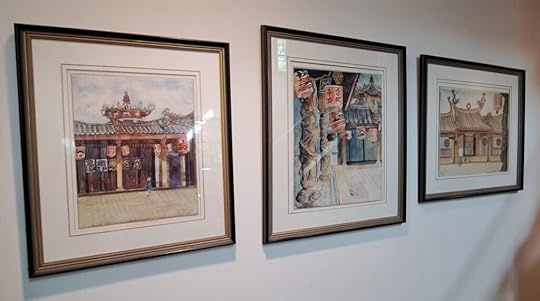
My most recent novel, The Last Bird of Paradise, is set in Singapore, where I lived for many years. Besides the inspiration of a setting that was familiar to me, this book also has its origins in a piece of art, or actually in three pieces, paintings that I bought when I lived in the country. (See the image above.) My paintings were done in 1917 by an Englishwoman and depict the Thian Hock Keng temple. Looking for a story to build around the paintings, I discovered an incident in Singapore in 1915 that had a profound impact on the colony. That became the cornerstone of the novel, although most of the book is a contemporary story about a lawyer who acquires three paintings that speak to her. I recently gave a recorded presentation about the novel, which you can watch here.
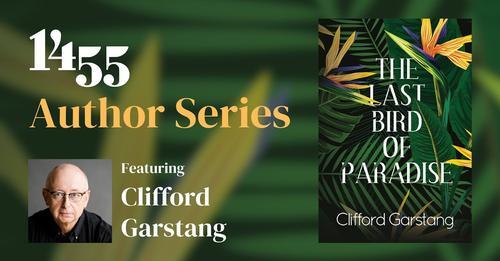
Now I’m working on a new project. While I don’t want to say too much about it just yet, I began thinking about it a couple of years ago on a visit to Vienna, Austria, where I attended classical music concerts and visited countless art museums. An idea formed from that experience that continued to take shape during a trip to Berlin last year. All I’ll say now is that the project as it currently stands is a short novel that is influenced by European art, literature, and music.
This is one reason why “writer’s block” isn’t a problem for me. All I have to do is look around me and something will spark my imagination.
June 18, 2024
Presenting on the 1455 Author Series
I was pleased to be the first author to participate in the new format for the 1455 Literary Arts Author Series in which, basically, I interviewed myself on camera about my new book and my writing practice.




